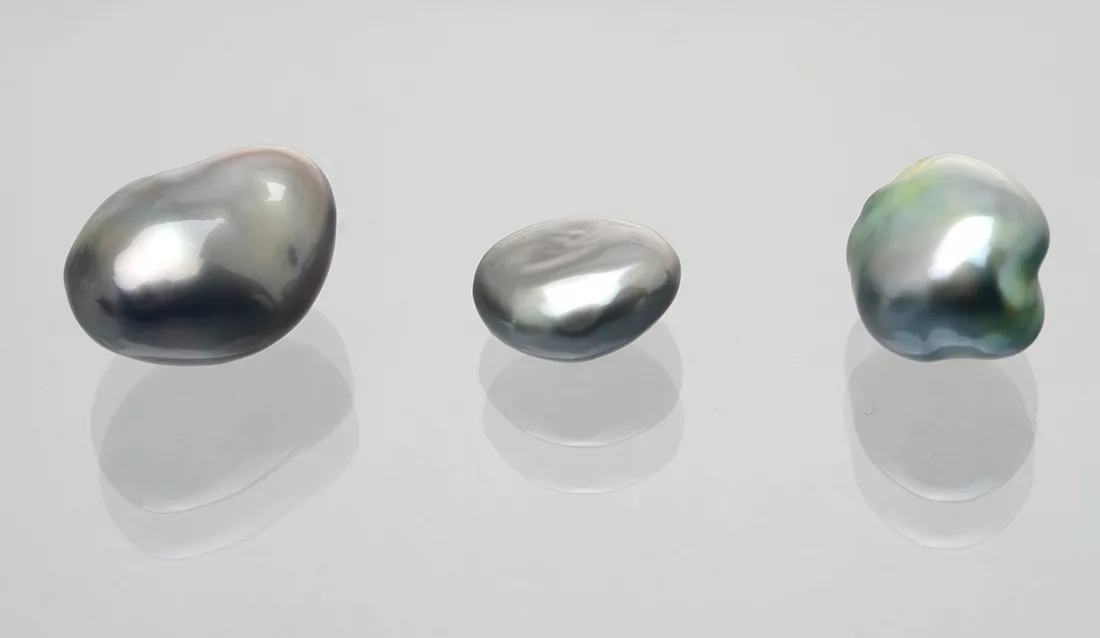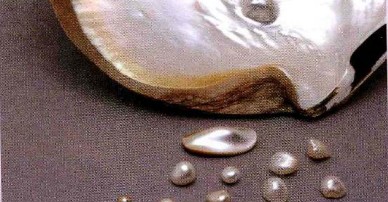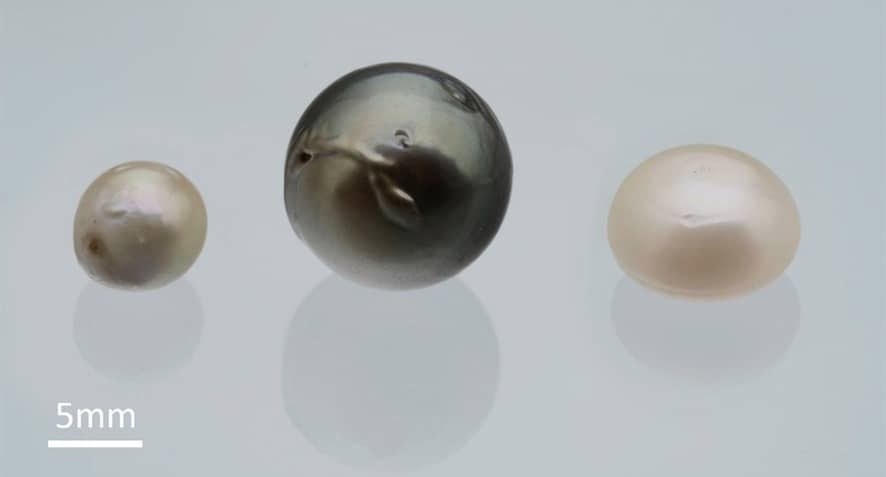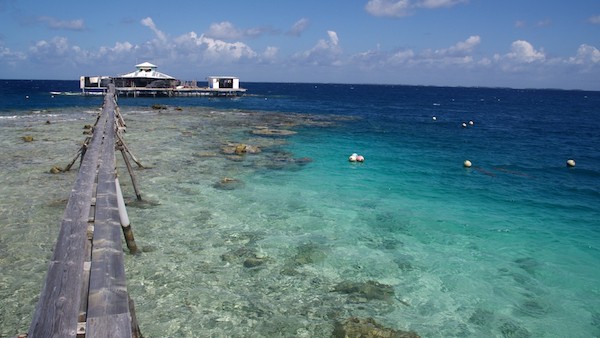
The value of cultured pearls: evolution and current trends
by Dr. A. Sato & Dr. L.E. Cartier, first published in Facette 28 (May 2023)
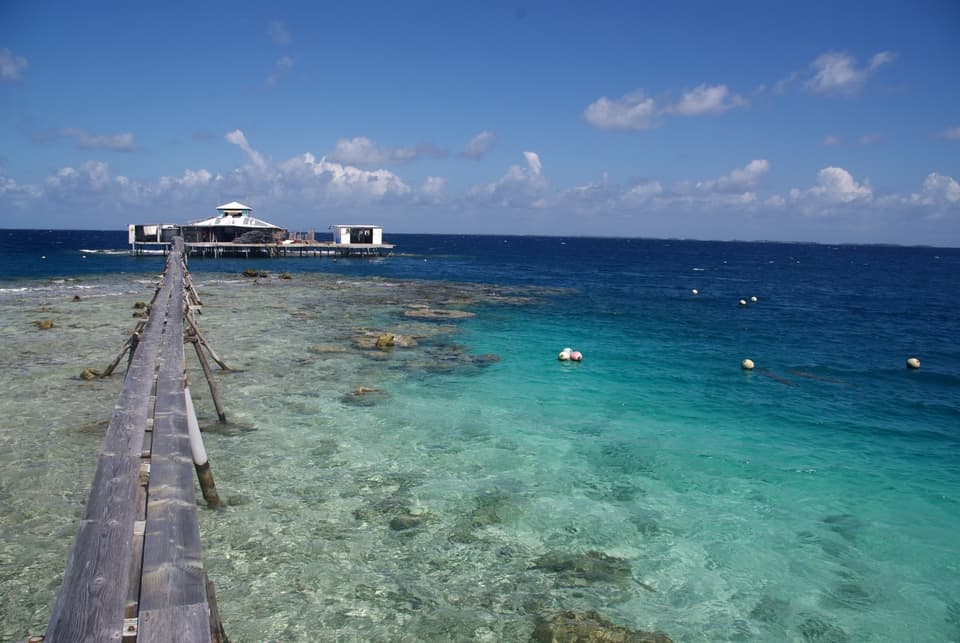
Pearls are often reported as the oldest valuable gem known to humankind, and have been collected for at least 8,500 years (Ainis, et al., 2019). Natural pearls are accidental formations in wild oysters or mussels, and have been considered to be one of the most precious gems in many cultures (Kunz & Stevenson, 1908). In the 19th century, the pearl sac theory was proposed and it later enabled the production of loose round cultured pearls in the 20th century (Nagai, 2013). Production began in Japan with the saltwater Akoya pearl oyster, and this same technique was later expanded to the South Sea pearl oyster (1956 in Australia) and the Tahitian pearl oyster in 1961 (Figure 1). Freshwater cultured production first began in Japan in 1935, but today takes place nearly exclusively in China where production began in the 1960s.
The trade in natural pearls began to collapse during the Inter-war period (1918-1939) and was lastingly hit by news of cultured pearls reaching the market in large quantities in the 1920s. Furthermore, the Great Depression of 1929, subsequent worldwide economic hardship and the Second World War (1939-1945) had a huge impact on luxury goods and natural pearls. At present, cultured pearls vastly dominate the global pearl industry. Natural pearls however remain a valuable niche and have experienced a considerable revival amongst collectors since the beginning of the 21st century when they re-emerged as star jewels at auctions and in private sales.
Cultured pearl beginnings
As if responding to the unprecedented natural pearl rush and depleting wild oyster supplies, English marine biologist William Saville-Kent was the first to successfully achieve culturing loose pearls at the end of the 19th century (Saville-Kent, 1897). In Japan, Mikimoto Kōkichi would apply the Mise-Nishikawa method in 1916 (Taylor & Strack, 2008) and successfully create a new industry, as well as founding the Japanese flagship jeweler Mikimoto. The round cultured pearls were sold by Mikimoto in London from 1919 onwards for 75% of the price of natural pearls (Yamada, 2013). In 1922, The New York Times reported that cultured pearls sold for 30% less than natural ones. In 1928, in a case of alleged fraud, it was stated that cultured pearls had about one tenth the value of the natural material (Ogden, 2012).
Pearl cultivation in Japan was suspended during World War II because of the regulation restricting manufacturing and selling of luxury goods (in order to prepare for war), but grew exponentially once it restarted under the careful protection of the Japanese government (National Diet Library Japan, 1952). Production reached a peak of 125 tonnes in 1967, and overproduction later created a set of challenges for the industry (Müller, 1997). Images of world fashion icons of the era, such as Grace Kelly, Marilyn Monroe, Audrey Hepburn, and Jacqueline Kennedy, showed them adorned with pearls. Middle-class women, influenced by the icons, desired affordable pearls, and cultured pearls from Japan were able to fulfil their demands.
In the last few decades, the huge volume of cultured pearls has highlighted the rarity of natural pearls. The Rockefeller Pearl Necklace sold for $470,000 in November 1998 and was resold in May 2018 for $2 million (Christies, 2018). It may be noted that the resale value of cultured pearls is very low, therefore, their purchases are more of an emotional purchase. On the other hand, the rarity of natural pearls has made them collector items and supports their resale value if they are of sufficient quality. In 1992, an Australian South Sea cultured pearl necklace (16-20mm) sold at Sotheby’s New York for $2.3 million, a world auction record for cultured pearls. It is hard to estimate what such a necklace would sell for today, but it is generally agreed that the price for cultured pearls is past the boom period of the 1980s and 1990s when supply was much lower.
Drivers of the cultured pearl market
This section focuses on marine cultured pearls (Akoya, South Sea, and Tahitian) due to the lack of reliable production and valuation data from China regarding freshwater cultured pearls. Freshwater cultured pearls vastly outstrip marine cultured pearl production in terms of volume, and estimates range between 600 tonnes and over 5,000 tonnes per year since 2005, though figures today would be lower (Cartier & Tu, 2017) (Zhu, et al., 2018). However, the $ value of these gigantic quantities is lower than that of marine cultured pearls. Recent innovation and a focus on higher quality freshwater cultured pearl production in China merit a separate study.
The value of individual cultured pearls is de ned by their size, shape, color, lustre, surface condition, and thickness of nacre. However, what are the key macro drivers of the cultured pearl market? Historical data of cultured pearl industries in Japan, Australia and French Polynesia indicates five main factors (Figure 2).
1) Supply volume: The first driver that repeatedly played a big role in history is the supply volume. In Japan, the skewed supply in 1960s-1970s pushed the price. In Australia, the fluctuation of prices in the 1990s was sharply correlated with its supply volume. In French Polynesia, the prices in the 1990s kept decreasing because of the oversupply and this trend has continued to this day.
2) Quality: The second driver is quality. The significant Australian cultured pearl price increase in the 1980s was because of the quality improvement (increase of round/baroque cultured pearls compared with half pearls). The above-mentioned low price in French Polynesian in the 1990s are also because of its poor quality.
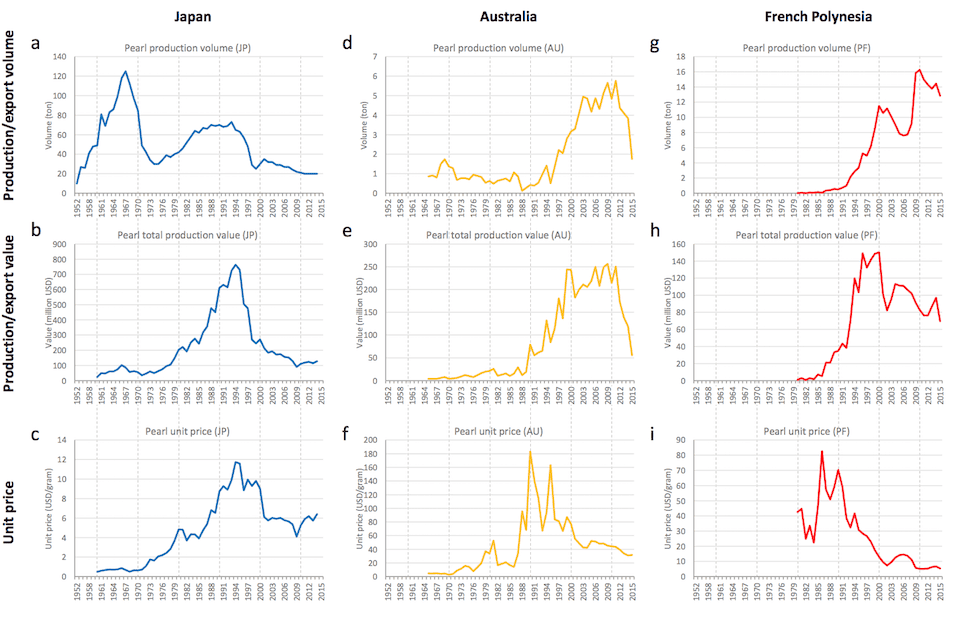
3) Trends: The third factor were the fashion trends that supported demand. In the 1950s-1960s, the growing supply of cultured pearls in Japan was supported by the boom of cultured pearls advertised by the fashion icons of the era.
4) Macro economy: The fourth driver is the macro economy, which impacts both supply and demand sides. In Japan, the asset price burst in the early 1990s caused the long-lasting recession and the cultured pearl supply plummeted. Around 2010, the Global Financial Crisis impacted negatively both supply volumes and prices in all three production areas.
5) Environment: The last factor is the environment, which biologically has an influence on the pearl oyster ecosystem. In the late 1990s, a disease struck Akoya oysters and 75% of oysters died in Japan. Together with the above mentioned long recession, it caused a significant decrease of the number of cultured pearl farmers in Japan. Climate change is also a growing risk for pearl production worldwide.
In addition to the above five drivers, a couple of additional factors are worth discussing to foresee the cultured pearl market. The first one becoming increasingly important in recent years is linked to sustainability of pearl production and how pearl farmers are affected by global changes (Cartier & Ali, 2012). Global warming and the associated higher water temperature can cause higher oyster mortality and diseases (Tomaru, et al., 2001), and lower quality nacre (Latchere, et al., 2018). Ocean acidification due to higher levels of carbon dioxide in our atmosphere (and thus in the oceans) causes shell nacre malformation and significant decline in shell strength, and pearl nacre may also be influenced (Welladsen, et al., 2010). Climate change is also leading to an increase in tropical storms and could further threaten pearl farms due to rising sea levels (Figure 3). At the same time, consumer interest in sustainable cultured pearls is rising (Nash, et al., 2016), however, the change in consumer behaviour and conservative wholesalers is still not a straightforward trajectory. The establishment of greater traceability in the industry and more awareness of consumers are indispensable. Another factor to be noted in the future of pearl production is the technical advancements in culturing pearls. This includes using new methods to cultivate pearls and experiments including the use of organic nuclei to shorten production times (Cartier & Krzemnicki, 2013). Although it is yet unrealistic, genetic engineering (Katsuhito, 2002) or even pearls grown in vitro could not be excluded in the future (Jayasankar, et al., 2018) (Raghavan, et al., 2019).
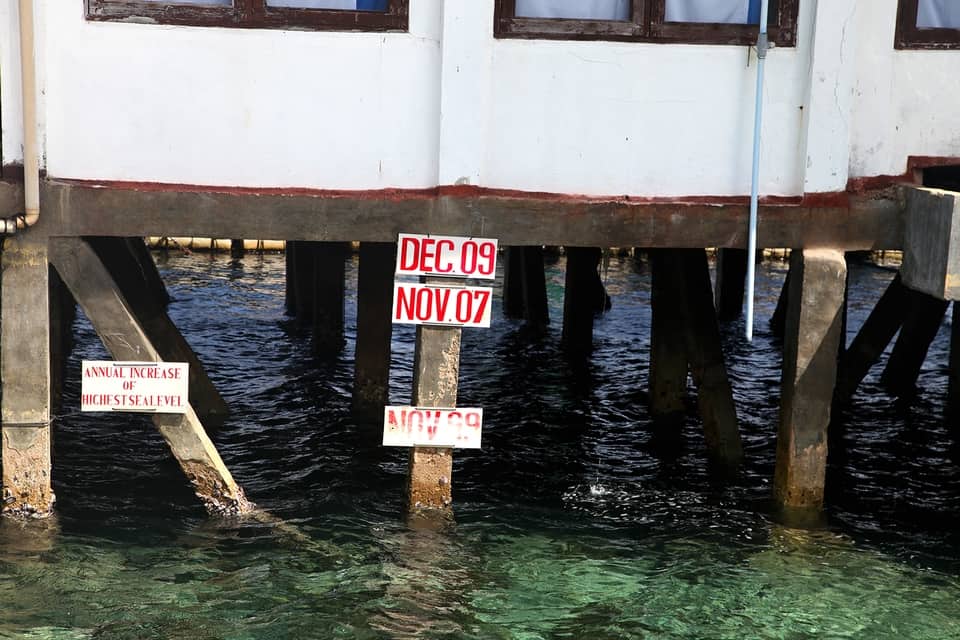
Note
This article expands upon a Gem-A student research project by Dr. Akitsugu Sato in 2021 and is a shortened version of an article published in GemGuide in 2022.Want to learn more about pearls?
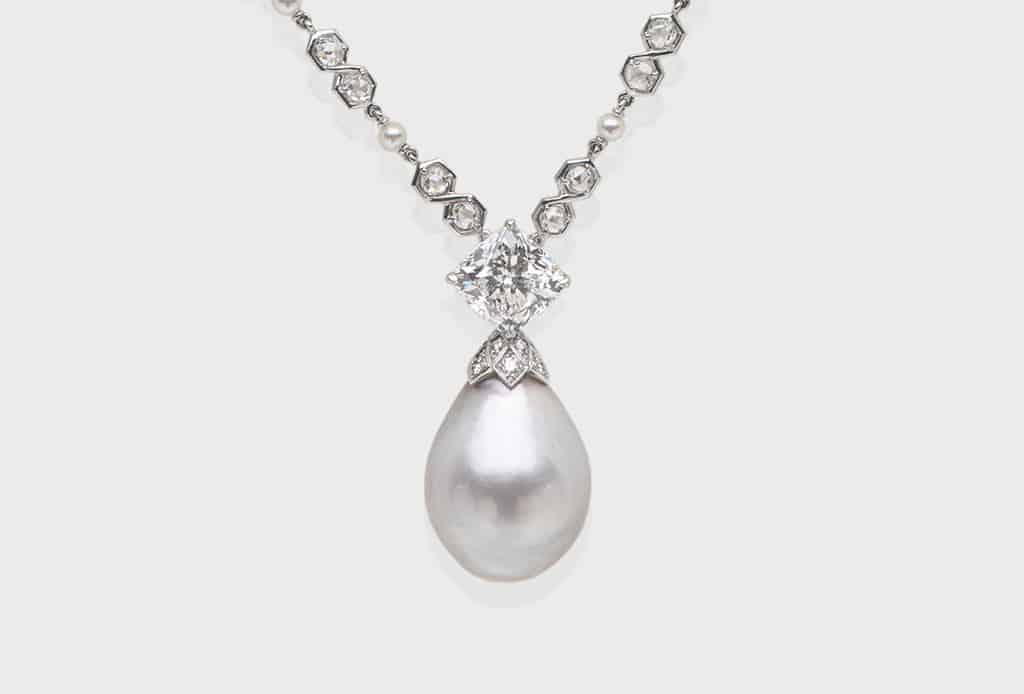
Start your journey to becoming an pearl expert with our free online course “Introduction to pearls”.
Learn all about pearls. Their fascinating history, how they form, where they come from. Learn about all the different origins of pearls and their treatments. Take this course as an introduction to the wonderful world of pearls.
